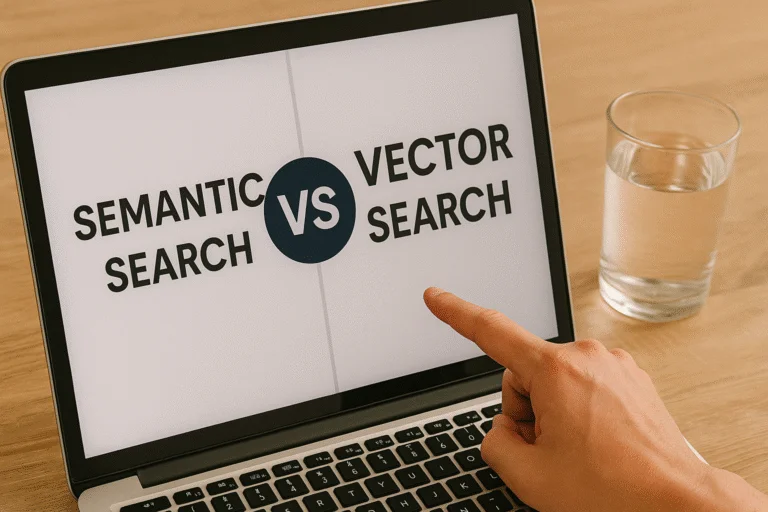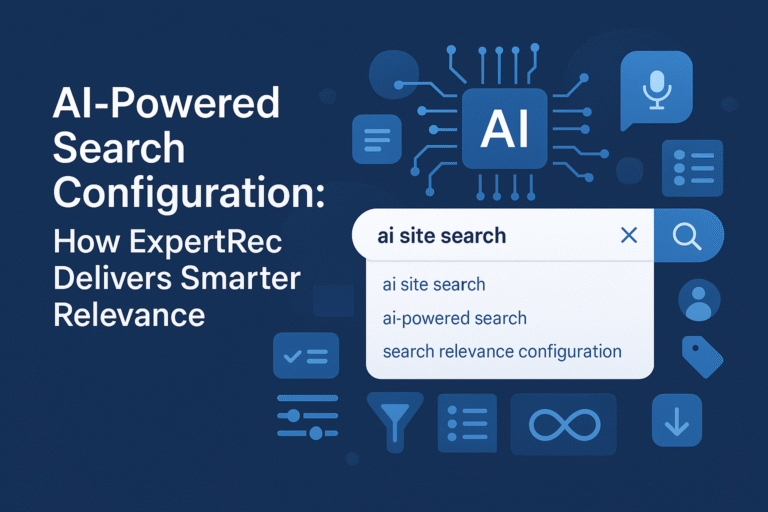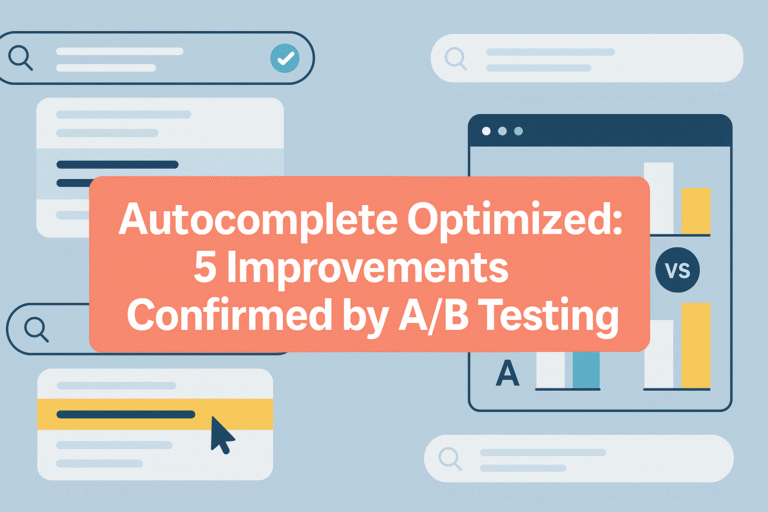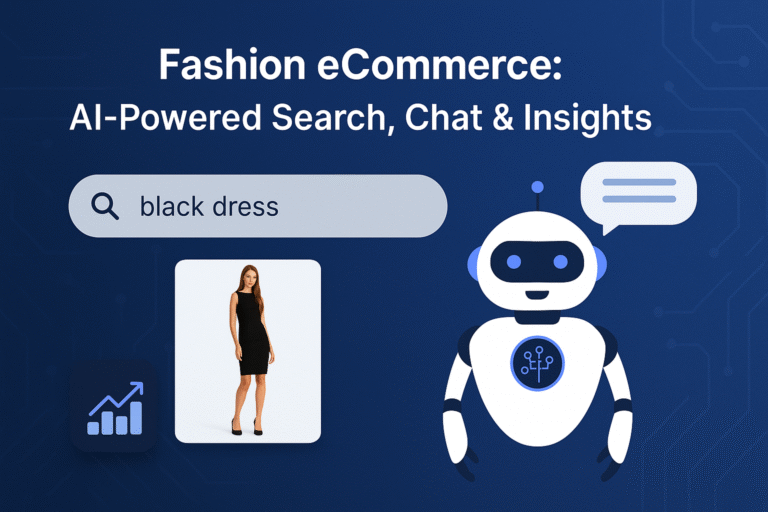Search has evolved far beyond keyword matching. With the rise of artificial intelligence and natural language processing, search technologies now aim to understand user intent, context, and semantics – making the experience faster, more accurate, and intuitive. Two of the most powerful technologies shaping this space today are semantic search and vector search.
These two approaches are driving innovation across a wide range of industries, including ecommerce, customer support, legal, healthcare, and knowledge management. As digital users expect smarter, more relevant search results, businesses must choose the right search technology to meet those expectations. But which one should you use? Are they interchangeable? Is one better than the other? Or does the best solution lie in combining both?
This guide explains, with deep technical depth:
- What each search type is and how it works
- Pros, cons, and ideal scenarios
- Whether these approaches are worth using or if better alternatives exist
- FAQs to clarify common doubts
Whether you’re a developer or product leader, you’ll gain clarity on when, why, and how to implement these technologies.
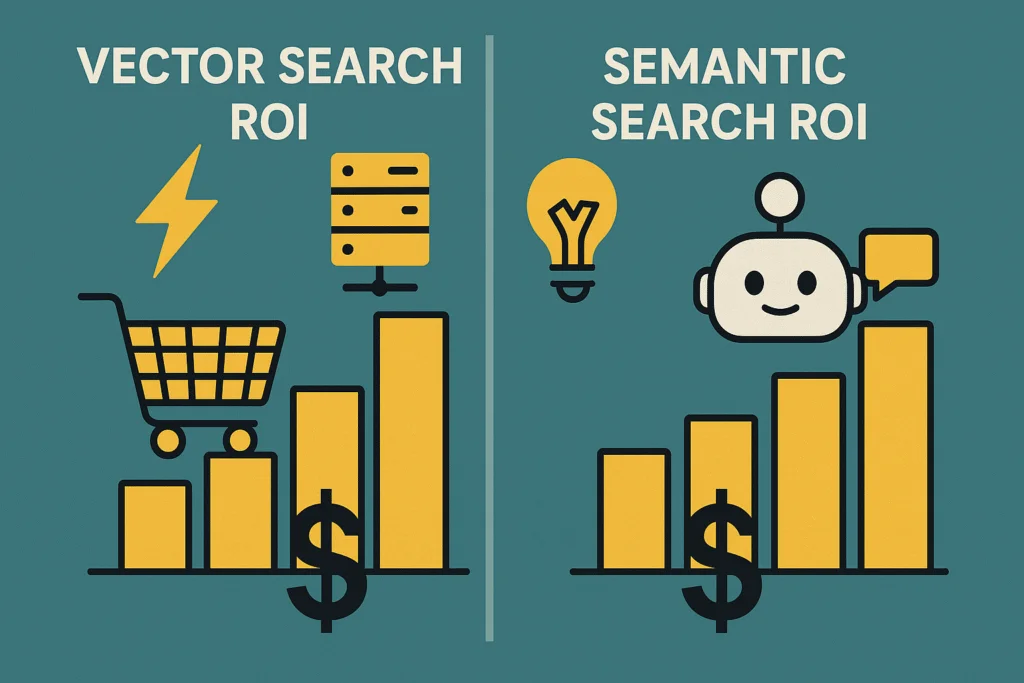
1. What Is Vector Search?
Embedding-Based Retrieval
Vector search represents data text, images, audio as numerical vectors (embeddings) in high-dimensional space. Queries are similarly converted to vectors via models like Word2Vec, BERT, or GPT. The engine then retrieves items closest in vector distance, typically using cosine similarity or Euclidean metrics.
Systems and Indexing
Vector databases like FAISS, Milvus, Pinecone, or Qdrant efficiently store and query these embeddings at scale. They often use ANN (Approximate Nearest Neighbor) methods with advanced indexing like HNSW for millisecond retrieval at scale.
Typical Use Cases
- Similar item recommendations (e.g., ‘Customers also viewed…’)
- Image/video similarity matching
- Cross-modal search (e.g., image to text)
- RAG (Retrieval-Augmented Generation) systems
Technical Strengths
- High performance and scalability
- Model-agnostic: any embedding source
- Excellent handling of synonymy without explicit rules
Technical Challenges
- Compute- and memory-intensive embedding generation
- Trade-off between chunk size and granularity
- Infrastructure complexity and cost
2. What Is Semantic Search?
Intent and Context Understanding
Semantic search aims to understand meaning intent, context, disambiguation not merely surface-level text. This involves NLP techniques like contextual embeddings, entity detection, and knowledge graphs.
Indexing and Ranking Pipeline
- Query processing: Tokenization, POS tagging, named-entity recognition
- Query expansion: Incorporating synonyms, entities, and context
- Embedding & vector ranking: Some semantic systems layer vector retrieval under the hood
- Final ranking: Using intent signals, context, and metadata
Use Cases
- Ambiguous queries (“bass” as music vs fish)
- Conversational search and chatbots
- Complex document or knowledge base retrieval
Technical Strengths
- Strong handling of intent, disambiguation, and nuance
- Ideal for longer, complex queries
- Scalable via transformer models
Technical Challenges
- Expensive due to deep NLP processing
- Slower retrieval speed than pure vector search
- Bias and privacy issues
3. Head‑to‑Head Comparison
| Feature | Vector Search | Semantic Search |
|---|---|---|
| Representation | Dense embeddings (numeric) | Contextual intents (NLP) |
| Retrieval method | Similarity matching (cosine, dot) | Intent + contextual reranking |
| Speed | Extremely fast (~ms queries) using ANN | Slower due to NLP pipelines |
| Scalability | High – specialized DBs | Medium – transformer-heavy, distributed |
| Context handling | Statistical similarity | High-level contextual understanding |
| Accuracy | Good for similarity tasks | Higher for intentful or nuanced queries |
| Infrastructure | GPU/CPU and vector DBs | Transformer clusters, pre/post-processing |
| Best Use | Recommenders, RAG, multimodal search | Conversational and legal/medical document search |
When to Use Each
- Use vector search when similarity between items (products, images, audio) is primary.
- Use semantic search when query context, intent, and ambiguous language matter.
- Best results come from a hybrid approach, combining high-speed vector filtering with semantic reranking.
4. Is It Worth Implementing?
Vector Search ROI
Vector search accelerates recommendation and similarity-based use cases, offering high precision. However, it demands resource-intensive infrastructure and incurs additional costs due to chunking and storage overhead. Ideal for applications needing fast, relevant results, but careful consideration of performance-to-cost ratio is essential.
Semantic Search ROI
Semantic search delivers strong ROI in knowledge management, chatbots, and user intent understanding. It enables natural language relevance but requires maintaining expensive transformer-based infrastructure. Best suited for language-rich environments, though ongoing operational costs can be significant.
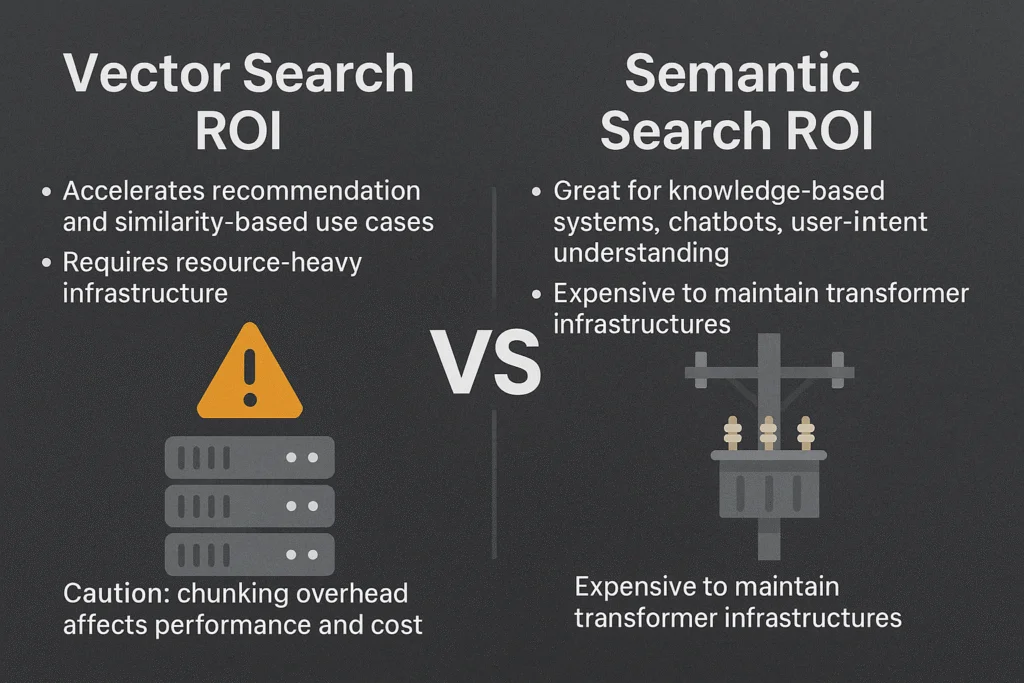
The Hybrid Advantage
Combining both gives you fast, approximate filtering and accurate, contextual reranking—a balanced approach for many real-world applications.
5. Expertrec: Simplifying Hybrid Search for Ecommerce
Expertrec integrates vector and semantic techniques in a user‑friendly, no‑code platform:
- Fast retrieval with lightweight embeddings
- Contextual relevance using NLP to understand user intent
- Plug-and-play integration with Shopify, WooCommerce, Magento, and custom sites
- No infrastructure overhead, hosted and managed
- Real-time indexing, typo tolerance, synonym handling, and dynamic ranking
- Supports voice search, faceted navigation, and conversion-friendly ranking
Rather than building complex pipelines, Expertrec delivers high-performing, hybrid search capabilities with minimal developer effort.
Final Thoughts
Semantic vs Vector Search isn’t a binary choice you need both. Vector search handles fast similarity retrieval, while semantic search manages nuanced, intent-rich queries. Pure implementations fall short: vector-only misses nuanced meaning, semantic-only misses scale.
For most ecommerce and knowledge-driven applications, a hybrid approach is optimal. And Expertrec offers that blend out‑of‑the‑box, with ease and scale.
FAQs (Semantic Search vs Vector Search)
Vector search matches numeric similarity, while semantic search understands intent and context using NLP pipelines.
Q2. Can vector search alone understand context?
Only partially – it’s statistically similar but doesn’t handle ambiguity or intent as semantic search does .
Q3. What is a hybrid search system?
One that uses vector search for retrieval and semantic NLP models for reranking, combining speed with accuracy .
Q4. Which is faster: vector or semantic search?
Vector search (with ANN like HNSW) is faster (milliseconds), whereas semantic search involves heavier NLP and is slower.
Q5. Are vector DBs expensive?
They can be – storing millions of embeddings requires memory, CPU, or GPU resources.
Q6. Can hybrid improve SEO or conversions?
Yes – by delivering more accurate results, especially in ecommerce, enhancing user engagement, and boosting conversion rates.
Q7. Does Expertrec support both search types?
Yes, Expertrec uses lightweight embeddings and NLP pipelines to combine similarity lookup and intent understanding seamlessly.
Q8. Do I need a large team to set this up?
No, Expertrec handles the complexity with no-code/low-code implementation and managed infrastructure.
Q9. Can Expertrec handle product recommendations?
Absolutely it supports vector-based similarity for product recommendations and semantic search for intent-based discovery.
Q10. How long to integrate Expertrec?
With plugins or scripts, most stores go live in under an hour no need for heavy engineering or AI infrastructure.
